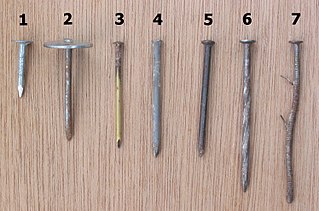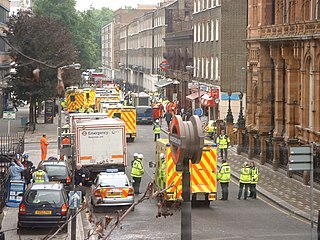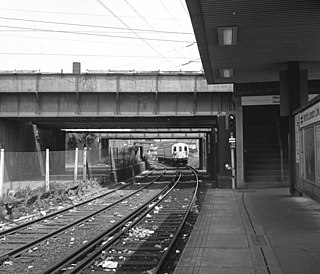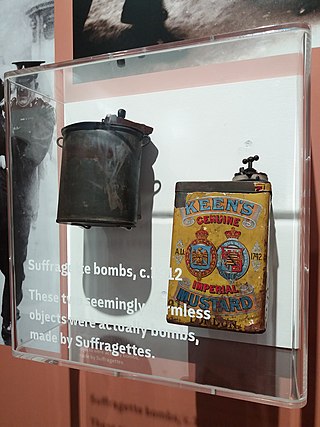The Real Irish Republican Army, or Real IRA (RIRA), was a dissident Irish republican paramilitary group that aimed to bring about a United Ireland. It was formed in 1997 following a split in the Provisional IRA by dissident members, who rejected the IRA's ceasefire that year. Like the Provisional IRA before it, the Real IRA saw itself as the only rightful successor to the original Irish Republican Army and styled itself as simply "the Irish Republican Army" in English or Óglaigh na hÉireann in Irish. It was an illegal organisation in the Republic of Ireland and designated a proscribed terrorist organisation in the United Kingdom and the United States.

North Greenwich is a London Underground station. Despite its name, it is not in the local area historically known as North Greenwich, on the Isle of Dogs, north of the River Thames; a completely different North Greenwich station used to be there, from 1872 until 1926. It is actually closer to Charlton than to Greenwich; however, it is at the northernmost tip of the Royal Borough of Greenwich, which perhaps gives the best explanation of the name.

A nail bomb is an anti-personnel explosive device containing nails to increase its effectiveness at harming victims. The nails act as shrapnel, leading almost certainly to more injury in inhabited areas than the explosives alone would. A nail bomb is also a type of flechette weapon. Such weapons use bits of shrapnel to create a larger radius of destruction.

The 1996 Manchester bombing was an attack carried out by the Provisional Irish Republican Army (IRA) on 15 June 1996. The IRA detonated a 1,500-kilogram (3,300 lb) lorry bomb on Corporation Street in the centre of Manchester, England. It was the biggest bomb detonated in Great Britain since the Second World War. It targeted the city's infrastructure and economy and caused significant damage, estimated by insurers at £700 million, a sum surpassed only by the 1993 Bishopsgate bombing, also by the IRA.

Parsons Green is an above-ground London Underground station on the Wimbledon branch of the District line that opened in 1880. It is between Fulham Broadway and Putney Bridge stations and is in Zone 2. There are entrances on Parsons Green Lane and in Beaconsfield Walk. The station is a short distance north of the green itself. It was previously a train-operator depot, until functions were transferred to Earl's Court.

The 7 July 2005 London bombings, also referred to as 7/7, were a series of four coordinated suicide attacks carried out by Islamist terrorists that targeted commuters travelling on London's public transport during the morning rush hour.
The history of terrorism involves significant individuals, entities, and incidents associated with terrorism. Scholars often agree that terrorism is a disputed term, and very few of those who are labeled terrorists describe themselves as such. It is common for opponents in a violent conflict to describe the opposing side as terrorists or as practicing terrorism.

The London Docklands bombing occurred on 9 February 1996, when the Provisional Irish Republican Army (IRA) detonated a powerful truck bomb in South Quay. The blast killed two people and devastated a wide area, causing an estimated £150 million worth of damage. The IRA had sent warnings 90 minutes beforehand, but the area was not fully evacuated. As well as the two people who were killed, more than 100 were injured, some permanently.

The Bishopsgate bombing occurred on 24 April 1993, when the Provisional Irish Republican Army (IRA) detonated a powerful truck bomb on Bishopsgate, a major thoroughfare in London's financial district, the City of London. Telephoned warnings were sent about an hour beforehand, but a news photographer was killed in the blast and 44 people were injured, with fatalities minimised due to its occurring on a Saturday. The blast destroyed the nearby St Ethelburga's church and wrecked Liverpool Street station and the NatWest Tower.

Óglaigh na hÉireann is a small dissident Irish republican paramilitary group that took part in the dissident Irish Republican campaign. The organisation started carrying out attacks around 2009 and was formed after a split within the Real IRA, led by Seamus McGrane.

The dissident Irish republican campaign began at the end of the Troubles, a 30-year political conflict in Northern Ireland. Since the Provisional Irish Republican Army called a ceasefire and ended its campaign in 1997, breakaway groups opposed to the ceasefire and to the peace agreements have continued a low-level armed campaign against the security forces in Northern Ireland. The main paramilitaries involved are the Real IRA, Continuity IRA and formerly Óglaigh na hÉireann. They have targeted the Police Service of Northern Ireland (PSNI) and the British Army in gun and bomb attacks as well as with mortars and rockets. They have also carried out bombings that are meant to cause disruption. However, their campaign has not been as intensive as the Provisional IRA's, and political support for groups such as the Real IRA is "tending towards zero".
The Thiepval Barracks bombing was a double car bomb attack carried out by the Provisional Irish Republican Army (IRA) on 7 October 1996. The bombs exploded inside Thiepval Barracks, the British Army headquarters in Northern Ireland. One British soldier was killed and 31 people were injured. This bombing was the first major attack on a military base in Northern Ireland since the end of the IRA's ceasefire eight months earlier.

On 15 September 2017, at around 08:20 BST, an explosion occurred on a District line train at Parsons Green Underground station, in London, England. Thirty people were treated in hospital or an urgent care centre, mostly for burn injuries, by a botched, crude "bucket bomb" with a timer containing the explosive chemical TATP. Police arrested the main suspect, 18-year-old Iraqi asylum seeker Ahmed Hassan, in a departure area of the Port of Dover the next day, and subsequently raided several addresses, including the foster home of an elderly couple in Sunbury-on-Thames where Hassan lived following his arrival in the United Kingdom two years earlier claiming to be an asylum seeker.
This is a timeline of the events and actions during the Troubles that were carried out in Great Britain, the vast majority of which were carried out by Irish Republican paramilitaries mainly the Provisional IRA were by far the most active but both the Official IRA and the Irish National Liberation Army, also carried out a number of attacks, which included bombings and shootings. Ulster Loyalist paramilitary groups also carried out a small number of violent actions.
The Baltic Exchange bombing was an attack by the Provisional IRA on the City of London, Britain's financial centre, on 10 April 1992, the day after the General Election which re-elected John Major from the Conservative Party as Prime Minister. The one-ton bomb – concealed in a van and consisting of a fertiliser device wrapped with a detonation cord made from 100 lb (45 kg) of semtex – was the biggest bomb detonated on mainland Britain since World War II. The bombing killed three people, injured 91 others, and severely damaged the Baltic Exchange and its surroundings.

The West Ham station attack was a bombing and shooting attack at West Ham station in east London on 15 March 1976. A 5 lb (2.3 kg) bomb on a Metropolitan line train exploded prematurely in the front carriage of the train, injuring seven passengers. The bomb detonated prior to reaching the City of London, where it was thought the intended target was Liverpool Street station at rush hour. Adrian Vincent Donnelly, a Provisional Irish Republican Army (IRA) member, then shot Post Office engineer Peter Chalk in the chest, and killed train driver Julius Stephen, who had attempted to catch him. Donnelly exited the station to the street and threatened people with his revolver before PC Raymond Kiff caught up with him. Shouting "You English bastards!", Donnelly shot himself in the chest, but he survived and was apprehended by Kiff.

Suffragettes in Great Britain and Ireland orchestrated a bombing and arson campaign between the years 1912 and 1914. The campaign was instigated by the Women's Social and Political Union (WSPU), and was a part of their wider campaign for women's suffrage. The campaign, led by key WSPU figures such as Emmeline Pankhurst, targeted infrastructure, government, churches and the general public, and saw the use of improvised explosive devices, arson, letter bombs, assassination attempts and other forms of direct action and violence.











